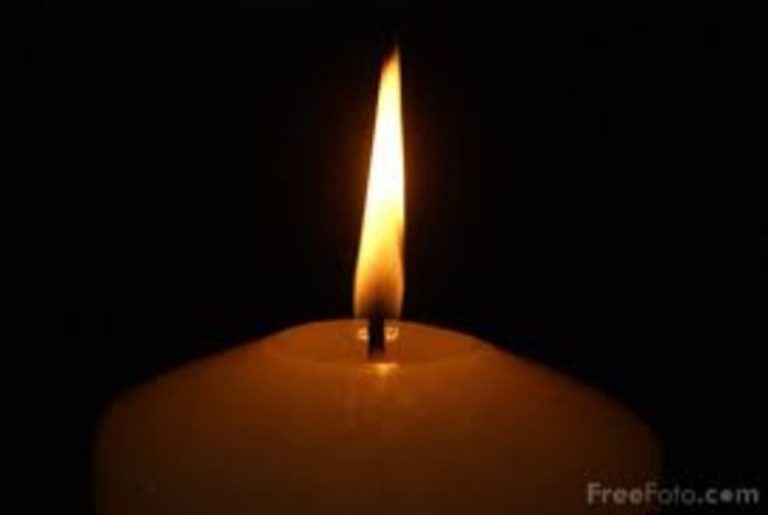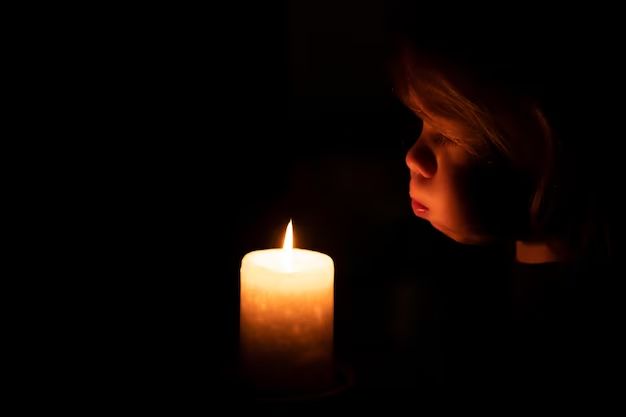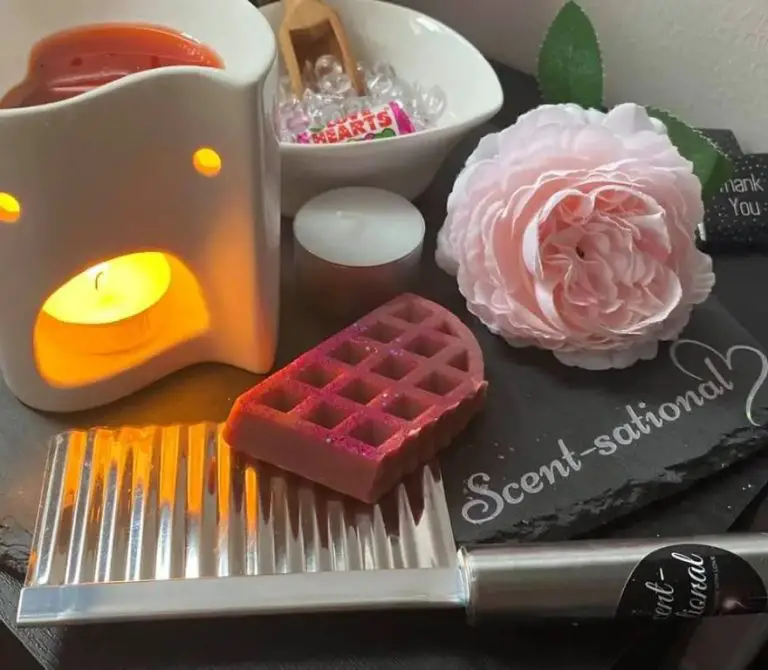Can I Burn A Candle On A Plate?
Placing candles on plates or candle plates is a common practice for both functional and decorative purposes. Functionally, the plate catches wax drips and prevents them from landing on furniture or table surfaces. The plate also provides a stable, flat base for the candle. Decoratively, a candle plate allows you to layer and arrange candles creatively as part of a centerpiece or display. The reflections and shapes created by grouping candles on plates can be very aesthetically pleasing.
Additionally, some people choose to burn candles directly on plates as an easy DIY project. Plates are readily available in most homes, making them a convenient candle holder option. Glass, ceramic, metal, and other plate materials can all work as long as safety precautions are taken. So whether you want to protect your furniture, create a decorative candlescape, or repurpose plates for an easy DIY, there are great reasons to burn candles on plates.
Pros of Burning Candles on Plates
One of the biggest benefits of placing a burning candle on a plate is that it can catch any melted wax or drips and prevent them from falling on and potentially damaging your table, desk, or other surface. As candles burn down, they often leave behind drips and pools of wax that can be difficult to clean up and remove if they harden directly on your furniture. Putting a plate, saucer, or candle holder underneath gives you an easy way to contain that melted wax.
Plates are inexpensive and provide a protective layer between your candle and whatever surface it’s sitting on. That way if any wax does spill over the edges, it will just harden on the plate instead of ruining your nice tablecloth or desk. You can simply pick up the plate when finished and toss the wax in the trash rather than having to scrub or scrape to remove wax that has adhered directly to a surface.
Another benefit is that plates can catch any wick trimmings that may fall as you trim your candle wick while burning. These small wick pieces could leave burn marks if they landed on a bare table or countertop. A plate again serves as protective barrier.
For these reasons, putting your candle on a plate is an easy and affordable way to minimize messes and damages. The plate catches all the drips and wax so you can avoid permanently staining your furnishings.
Cons of Burning Candles on Plates
While burning candles on plates can add ambiance and decoration to a space, there are some potential downsides to keep in mind.
One of the main cons is that plates can get extremely hot from the candle flame. Ceramic, glass and metal plates do not provide insulation from the heat of the candle as it burns. The plate essentially acts as a heat conductor, absorbing and radiating the heat from the candle.
This build up of heat can pose a potential fire hazard. If the plate gets hot enough, it could ignite or damage any surface it’s sitting on, like wood tables or counters. The plate itself could also crack or shatter if it gets too hot.
Additionally, the bottoms of most plates are not entirely flat. There may be some unevenness or small indentations. If melted wax pools in these spots, it can be nearly impossible to remove once cooled and hardened. This can permanently damage the plate.
So if not managed properly, burning candles directly on plates can be a fire risk and ruin the plates themselves. It’s important to take precautions to prevent overheating and wax buildup.
Choosing the Right Plate Material
When selecting a plate to burn a candle on, the material you choose is very important. Certain materials are safer and more suitable for candle plates than others. Here’s an overview of some of the most common plate materials and how they work for candle plates:
Glass – Glass plates are a popular choice for candle plates. Heat-resistant glass is ideal, as regular glass may crack from the heat of the flame. Glass disperses heat well and is non-flammable. Just be sure the glass is thick enough to hold the weight of wax and withstand any wax drips.
Porcelain – Porcelain plates are another excellent option. Porcelain can withstand very high temperatures, so it’s perfect for candles. The smooth glazed surface also makes wax cleanup easy. Vintage porcelain plates often have beautiful painted patterns too.
Metal – Metal candle plates are also safe options, as long as they are non-flammable metals like stainless steel, tin, or aluminum. Be aware that thin metals may get very hot. Textured metals can make removing wax more difficult.
Ceramic & Pottery – Unglazed ceramic and terra cotta can work, but may absorb wax which can be very difficult to remove later. Finished ceramics with a glaze are better. Avoid thinly pottery that could crack from the heat.
Wood – Wood is not recommended for candle plates, even if finished or treated. The flame’s heat can burn, scorch, or ignite the wood over time. Wood also absorbs wax deeply.
So in summary, glass, porcelain, and non-flammable metals are the best plate materials for safe candle burning. Avoid using wood, raw ceramic, or thin plates that could overheat or break.
Safety Tips
When burning candles on plates, it’s important to keep safety in mind. Here are some tips to help prevent accidents and injuries:
Keep away from flammable items – Don’t place your candle plate near things like curtains, papers, trees, or anything else that could easily catch fire. Keep a 12 inch perimeter around your candle plate free of flammable materials.
Never leave unattended – Stay in the same room with the burning candle, and keep an eye on it. Don’t go to another room or leave the house with a lit candle plate. The flame could grow out of control or tip over if knocked into.
Be careful not to bump or move the plate when the candle is lit. Extinguish the flame if you need to relocate the plate. Avoid drafts from open doors or windows that could blow the flame in unintended directions.
Keep children and pets away from lit candle plates. Supervise kids closely and teach them proper candle safety.
Have a lid or snuffer on hand to quickly extinguish the flame in case of emergency.
In summary, exercise caution when burning candles on plates. A few simple precautions can prevent tragic accidents.
Alternatives to Plates
While plates may seem like a convenient option, there are better alternatives for safely holding candles. Here are some of the top options to consider instead of plates:
Candle Holders
Candle holders are specifically designed for the purpose of holding candles. They come in a wide variety of sizes, shapes, materials, and styles to suit any décor. Candle holders often have a cup or small bowl shape to securely contain melting wax. This prevents wax from dripping and pooling elsewhere. Many also have handles or stems so they can be easily moved around.
Small Bowls
Small bowls made of glass, ceramic or metal make excellent improvised candle holders. Their curved sides help channel melting wax back into the holder. Look for heat-safe materials like glass, metal or ceramic. Avoid plastic which could melt from the flame. Bowls should be deep enough to contain wax pools but not so deep that the flame is choked.
Saucers
Saucers are shallow, flat dishes traditionally used for teacups. Their low profile shape works well for holding pillar or votive candles. Opt for saucers made of sturdy, fire-resistant materials like ceramic, glass or metal. Avoid flammable materials like wood or plastic. Make sure the saucer is large enough to collect any melted wax but small enough to be stable.
Candle Plate DIY Projects
Making your own candle plate holders can be a fun and creative craft project. Here are some ideas for DIY candle plates:
Sand and Shells Plate
For a beachy decor, coat a plate in a layer of glue and cover with sand and seashells. Place a pillar candle in the center for a coastal vibe.
Wine Bottle Candle Plate
Cut the bottom off a wine bottle to use as a little plate for a tealight or votive candle. This is perfect for parties!
Marble Contact Paper Plates
Use marble or granite contact paper to cover the top of ceramic plates. Place a candle in the center for an elegant look.
Painted Terra Cotta Plant Saucers
Paint terra cotta plant saucers in your favorite colors, then add candles for a cute and rustic holder.
Washi Tape Candle Plates
Decorate the rim of clear glass plates with strips of colorful washi tape. The tape will glitter around taper candles.
With some simple supplies and creativity, you can make candle plates that match any decor!
Decorating with Candle Plates
Candle plates can add a beautiful touch to any space when used thoughtfully in decor. Here are some style ideas and design inspirations for decorating with candle plates:
For a romantic or cozy look, group together a few candle plates on a mantel, hearth, or tablescape. Opt for a monochromatic color palette such as all white or ivory plates with candles in coordinating shades. Add some greenery like eucalyptus sprigs or roses for an extra special touch.
In a living room, arrange matching candle plates atop stacked books on an end table or coffee table. The grouping makes for an eye-catching focal point, especially when combined with your favorite coffee table books.
For drama, stagger towering glass candlesticks and shorter ceramic plates down the center of a long dining table. Mixing heights and materials creates visual interest. Include candles that complement your dinnerware for a pulled-together look.
In an entryway, line a console table with an assortment of candle plates and pillars to make a great first impression. Combine engraved, painted, or gilded plates for lots of personality. Match your home’s aesthetic – modern, traditional, rustic, etc.
On a kitchen, bar, or countertop, display white and metallic plates holding colorful taper candles. The vivid candles will pop against the neutral backgrounds for cheery illumination.
There are so many ways to creatively decorate with candle plates to take any space from basic to beautiful. With some thoughtful styling, candle plates can elevate your home’s ambiance every day or make special occasions extra special.
Summary
In summary, burning candles directly on plates has both advantages and disadvantages. On the plus side, plates provide a stable base for candles and catch dripping wax. Plates are inexpensive, easy to find, and come in a variety of sizes and materials. On the negative side, the direct heat from candles can damage some plate materials over time or leave behind wax that is difficult to remove.
The best practice is to choose a plate made of a material like glass, metal, or ceramic that can withstand heat. Avoid more delicate materials like wood, plastic, or paper plates. It’s also a good idea to use a plate larger than your candle, place foil or a candle mat between the candle and plate, and limit burn times to avoid excessive buildup of melted wax.
While burning candles on plates is generally safe with proper precautions, those concerned about damage may prefer alternatives like candle holders, saucers, or small trivets instead. With some care and common sense, plates can provide an inexpensive candle platform to illuminate and decorate your home.
References
This article was created based on the author’s personal experience and expertise. Additional research was conducted to provide background information and context. Here are some helpful resources for further reading on burning candles safely:
- Tips for Cleaning Candle Wax – This article from Better Homes & Gardens provides tips for removing wax from surfaces like glass and fabrics.
- Candle Safety Tips – Bob Vila shares important candle safety reminders like keeping candles away from flammable items and blowing them out before leaving a room.
- How to Burn Candles Safely – Consumer Reports covers candle fire hazards and provides safety guidelines for proper candle usage.
- Yankee Candle Safety Tips – Yankee Candle, a major candle retailer, offers common sense tips for safe candle burning and placement.




